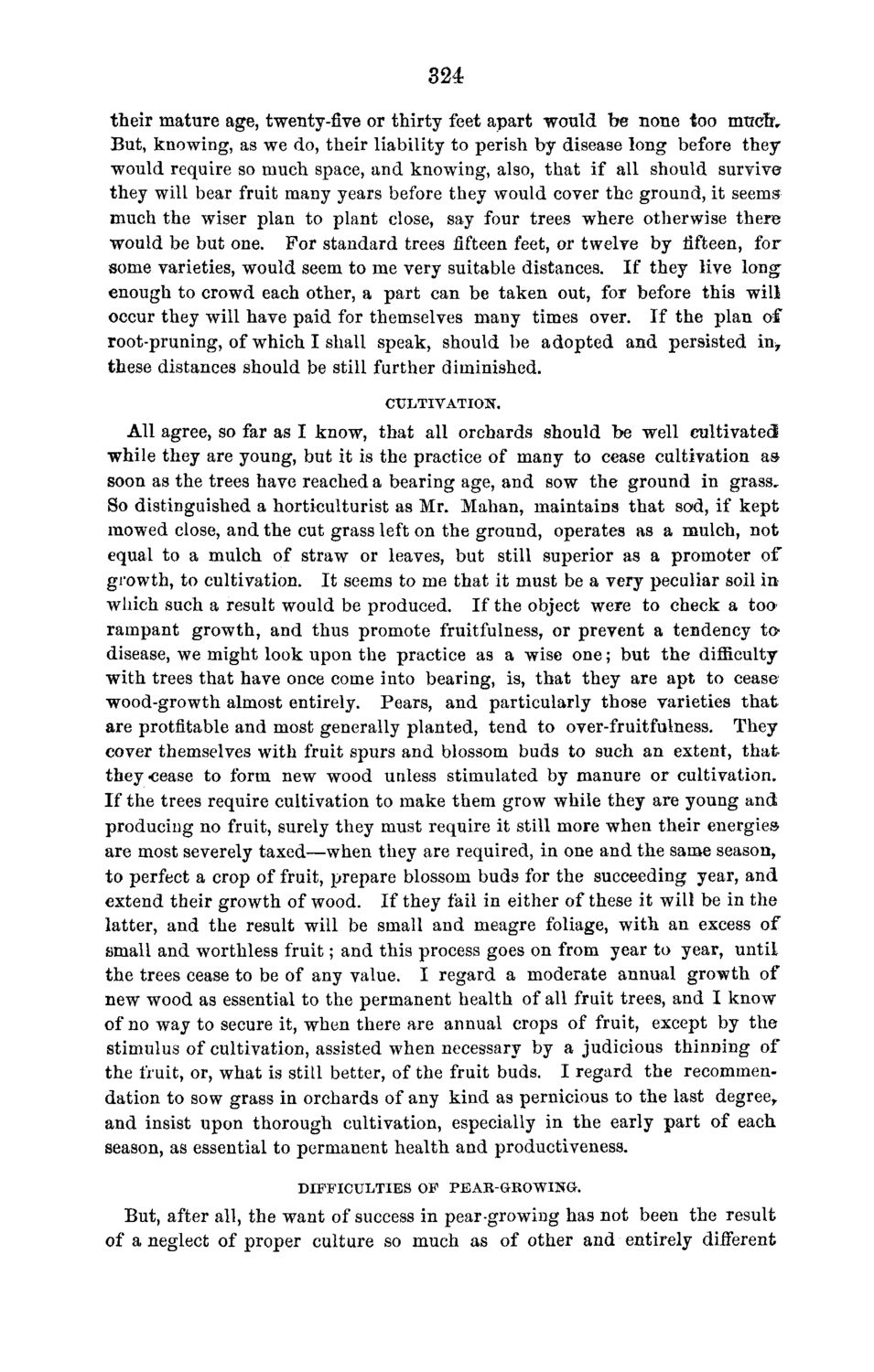| |
| |
Caption: Board of Trustees Minutes - 1870
This is a reduced-resolution page image for fast online browsing.

EXTRACTED TEXT FROM PAGE:
324 their mature age, twenty-five or thirty feet apart would be none too muetfr But, knowing, as we do, their liability to perish by disease long before they would require so much space, and knowing, also, that if all should survive they will bear fruit many years before they would cover the ground, it seems much the wiser plan to plant close, say four trees where otherwise there would be but one. For standard trees fifteen feet, or twelve by fifteen, for some varieties, would seem to me very suitable distances. If they live long enough to crowd each other, a part can be taken out, for before this will occur they will have paid for themselves many times over. If the plan of root-pruning, of which I shall speak, should be adopted and persisted in, these distances should be still further diminished. CTJLTIVATIOK. All agree, so far as I know, that all orchards should be well cultivated! while they are young, but it is the practice of many to cease cultivation assoon as the trees have reached a bearing age, and sow the ground in grass. So distinguished a horticulturist as Mr. Mahan, maintains that sod, if kept mowed close, and the cut grass left on the ground, operates as a mulch, not equal to a mulch of straw or leaves, but still superior as a promoter of growth, to cultivation. It seems to me that it must be a very peculiar soil in which such a result would be produced. If the object were to check a too rampant growth, and thus promote fruitfulness, or prevent a tendency to* disease, we might look upon the practice as a wise one; but the difficulty with trees that have once come into bearing, is, that they are apt to cease wood-growth almost entirely. Pears, and particularly those varieties that are protfitable and most generally planted, tend to over-fruitfulness. They cover themselves with fruit spurs and blossom buds to such an extent, that they-cease to form new wood unless stimulated by manure or cultivation. If the trees require cultivation to make them grow while they are young and producing no fruit, surely they must require it still more when their energies are most severely taxed—when they are required, in one and the same season, to perfect a crop of fruit, prepare blossom buds for the succeeding year, and extend their growth of wood. If they fail in either of these it will be in the latter, and the result will be small and meagre foliage, with an excess of small and worthless fruit; and this process goes on from year to year, until the trees cease to be of any value. I regard a moderate annual growth of new wood as essential to the permanent health of all fruit trees, and I know of no way to secure it, when there are annual crops of fruit, except by the stimulus of cultivation, assisted when necessary by a judicious thinning of the fruit, or, what is still better, of the fruit buds. I regard the recommendation to sow grass in orchards of any kind as pernicious to the last degree, and insist upon thorough cultivation, especially in the early part of each season, as essential to permanent health and productiveness. DIFFICULTIES OF PEAR-GROWING. But, after all, the want of success in pear-growing has not been the result of a neglect of proper culture so much as of other and entirely different
| |